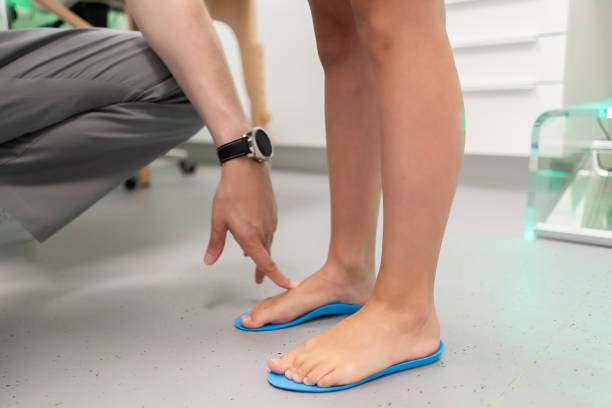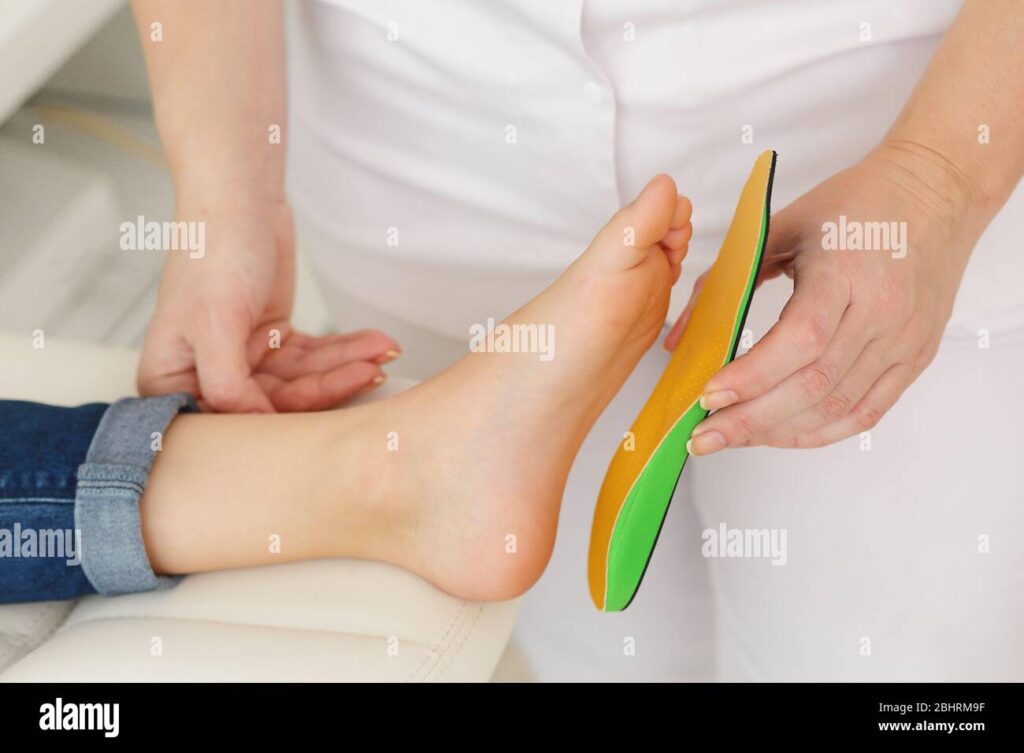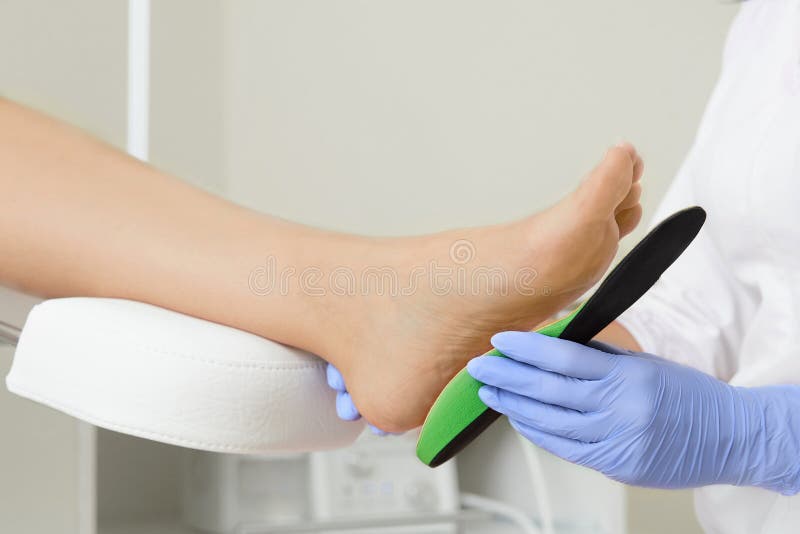Introduction

Orthotic insoles are shoe inserts designed to support, align, and improve the function of your feet. They are useful for people with foot pain, flat feet, or other foot problems. Using orthotic insoles is easy and can make a big difference in your comfort and mobility.
First, make sure you have the right type of insole for your needs. You can get custom-made insoles from a podiatrist or buy over-the-counter ones. Once you have your insoles, remove the existing insoles from your shoes. Place the orthotic insoles inside, making sure they fit snugly without any gaps or folds.
Wear your shoes with the orthotic insoles for a few hours each day to start. Gradually increase the time you wear them to allow your feet to adjust. It’s normal to feel some discomfort at first, but this should go away as your feet get used to the new support. Always follow the instructions provided with your insoles and consult a healthcare professional if you have any concerns.
Types of Orthotic Insoles
Orthotic insoles, also known as orthotics, are devices inserted into shoes to support, align, and improve the function of the feet. They can alleviate pain, provide support, and enhance the overall biomechanics of walking and standing. Here are the main types of orthotic insoles:
1. Rigid Orthotics
Rigid orthotics are typically made from materials such as plastic or carbon fiber. These insoles are designed to control motion in two major foot joints, which lie directly below the ankle joint. By controlling motion in these joints, rigid orthotics can address issues such as excessive pronation (foot rolling inward) or supination (foot rolling outward). They are often prescribed for people with foot pain, lower back pain, or leg pain caused by abnormal foot function.
2. Soft Orthotics
Soft orthotics are made from soft, compressible materials and are designed to absorb shock, increase balance, and take pressure off uncomfortable or sore spots. They are often recommended for individuals with conditions such as diabetes, arthritis, or severe foot deformities. Soft orthotics can be beneficial for older adults and people who spend a lot of time on their feet.
3. Semi-Rigid Orthotics
Semi-rigid orthotics combine features of both rigid and soft orthotics. They are typically constructed from layers of soft materials, reinforced with rigid or semi-rigid materials. These insoles provide dynamic support for balance and walking, making them ideal for athletes and children with certain foot issues, such as in-toeing or out-toeing.
4. Accommodative Orthotics
Accommodative orthotics are designed to provide additional cushioning and support to relieve discomfort and pain. They do not attempt to change the structure or function of the foot but rather offer comfort and protection. These insoles are often used for individuals with conditions like plantar fasciitis, diabetic foot ulcers, or other sensitive foot issues.
5. Functional Orthotics
Functional orthotics are designed to correct abnormal foot function and improve the way the foot moves. They can be rigid or semi-rigid and are typically prescribed for specific issues such as abnormal pronation or supination. By improving foot function, these orthotics can alleviate pain in the feet, legs, hips, and lower back.
6. Sports Orthotics
Sports orthotics are designed for athletes and active individuals. These insoles provide support, improve foot function, and help prevent injuries by stabilizing the foot and distributing pressure more evenly. They can be customized for different types of sports, such as running, soccer, or basketball, to cater to the specific demands of each activity.
7. Diabetic Orthotics
Diabetic orthotics are specially designed for individuals with diabetes, who are at higher risk for foot problems due to poor circulation and neuropathy (nerve damage). These insoles are made from soft materials that minimize friction and pressure points, reducing the risk of ulcers and other foot complications. They also provide extra cushioning to protect sensitive feet.
8. Heel Cups and Cushions
Heel cups and cushions are specific types of orthotics that provide extra support and padding for the heel. They are commonly used to relieve pain caused by conditions such as plantar fasciitis, heel spurs, or general heel pain. These devices can be made from gel, foam, or other soft materials to absorb shock and reduce pressure on the heel.
9. Arch Supports
Arch supports are designed to provide support to the arch of the foot, preventing it from collapsing or flattening. They can be particularly beneficial for individuals with flat feet or high arches. By supporting the arch, these insoles can help distribute weight more evenly across the foot and reduce strain on the muscles and ligaments.
10. Custom Orthotics
Custom orthotics are specially made to fit the unique contours of an individual’s feet. They are created based on a thorough examination and often involve taking a mold or digital scan of the foot. Custom orthotics can address a wide range of foot and lower body issues and provide personalized support and comfort.
Benefits of Orthotic Insoles

Orthotic insoles offer several benefits that can improve foot health and overall well-being. Here are some of the key advantages:
- Improved Comfort: Orthotic insoles provide extra cushioning and support, making shoes more comfortable to wear. This is especially helpful for people who spend a lot of time on their feet.
- Pain Relief: They can help alleviate pain caused by various foot conditions, such as plantar fasciitis, flat feet, and arthritis. By providing proper support, orthotic insoles reduce stress on the feet and lower limbs.
- Enhanced Stability: These insoles improve balance and stability by evenly distributing body weight across the feet. This can help prevent falls and reduce the risk of injury.
- Better Posture: Orthotic insoles can correct posture by aligning the feet properly. This can reduce strain on the back, hips, and knees, leading to better overall body alignment.
- Injury Prevention: By providing the right support and cushioning, orthotic insoles can help prevent common foot injuries such as sprains and stress fractures. They also reduce the impact on the joints during activities like running and walking.
- Customized Fit: Many orthotic insoles can be customized to fit the unique shape of an individual’s foot. This ensures that the support is tailored to specific needs, providing maximum benefit.
- Enhanced Athletic Performance: Athletes can benefit from orthotic insoles as they provide extra support and reduce fatigue. This can lead to improved performance and faster recovery times.
- Support for Medical Conditions: People with diabetes or other medical conditions that affect the feet can greatly benefit from orthotic insoles. They help prevent complications by ensuring proper foot alignment and reducing pressure points.
- Versatility: Orthotic insoles can be used in various types of footwear, from athletic shoes to everyday casual wear. This makes them a practical solution for many people.
- Long-term Benefits: Regular use of orthotic insoles can lead to long-term improvements in foot health and overall well-being. They can help maintain the health of the feet, reducing the need for more serious interventions in the future.
How to Choose Orthotic Insoles?

- Identify Your Need: Understand why you need insoles. Are you experiencing foot pain, flat feet, high arches, or other issues? Knowing the problem helps in selecting the right type.
- Consult a Professional: Visit a podiatrist or a foot specialist. They can assess your feet and recommend the best insoles for your condition.
- Know Your Foot Type: Determine if you have flat feet, neutral arches, or high arches. You can do this by looking at your wet footprint on a piece of paper. This will guide you to the right arch support.
- Choose the Right Material: Insoles come in various materials like gel, foam, or rigid plastic. Foam is great for cushioning, gel offers shock absorption, and rigid materials provide support.
- Consider the Shoe Type: Ensure the insoles fit well in your shoes. Some insoles are thin and flexible, making them suitable for everyday shoes, while others are more rigid and better for athletic or work shoes.
- Test for Comfort: Try the insoles before buying. Walk around and see how they feel. They should provide comfort and reduce pain without feeling bulky.
- Check for Durability: Look for insoles that are durable and can withstand regular use. Higher quality insoles might cost more but can last longer and offer better support.
- Read Reviews: Check online reviews and ratings. Other users’ experiences can provide insights into the effectiveness and comfort of the insoles.
By following these steps, you can find orthotic insoles that meet your needs and improve your foot comfort.
FAQs About Using Orthotic Insoles
- What are orthotic insoles?
Orthotic insoles are custom or over-the-counter shoe inserts designed to support, align, or improve the function of the feet. - How do I choose the right orthotic insoles?
Consult with a podiatrist or healthcare professional for custom insoles or choose over-the-counter insoles based on your specific foot condition, arch type, and activity level. - How should I break in my new orthotic insoles?
Gradually increase wear time over a few days or weeks, starting with 1-2 hours per day and adding an hour each day to allow your feet to adjust. - Can I transfer orthotic insoles between different pairs of shoes?
Yes, but ensure the shoes have a similar shape and size. Some insoles may need to be trimmed to fit properly in different shoes. - How often should I replace my orthotic insoles?
Replace them every 6-12 months, depending on wear and tear, or as recommended by your healthcare professional. Custom orthotics may last longer but should still be checked regularly.

